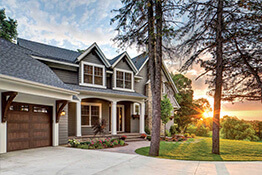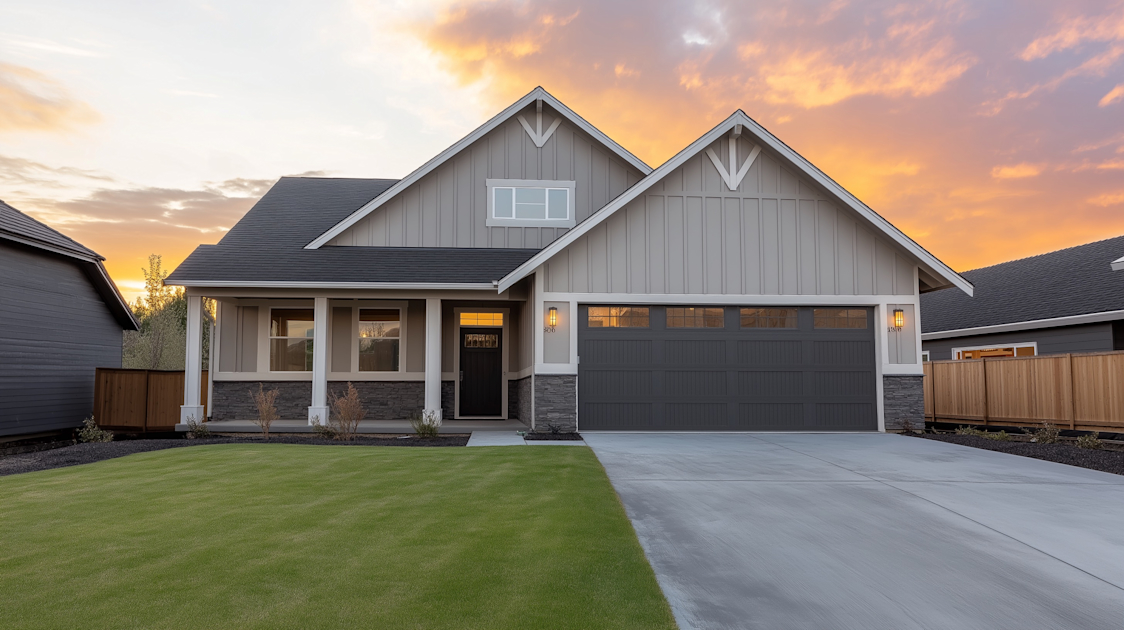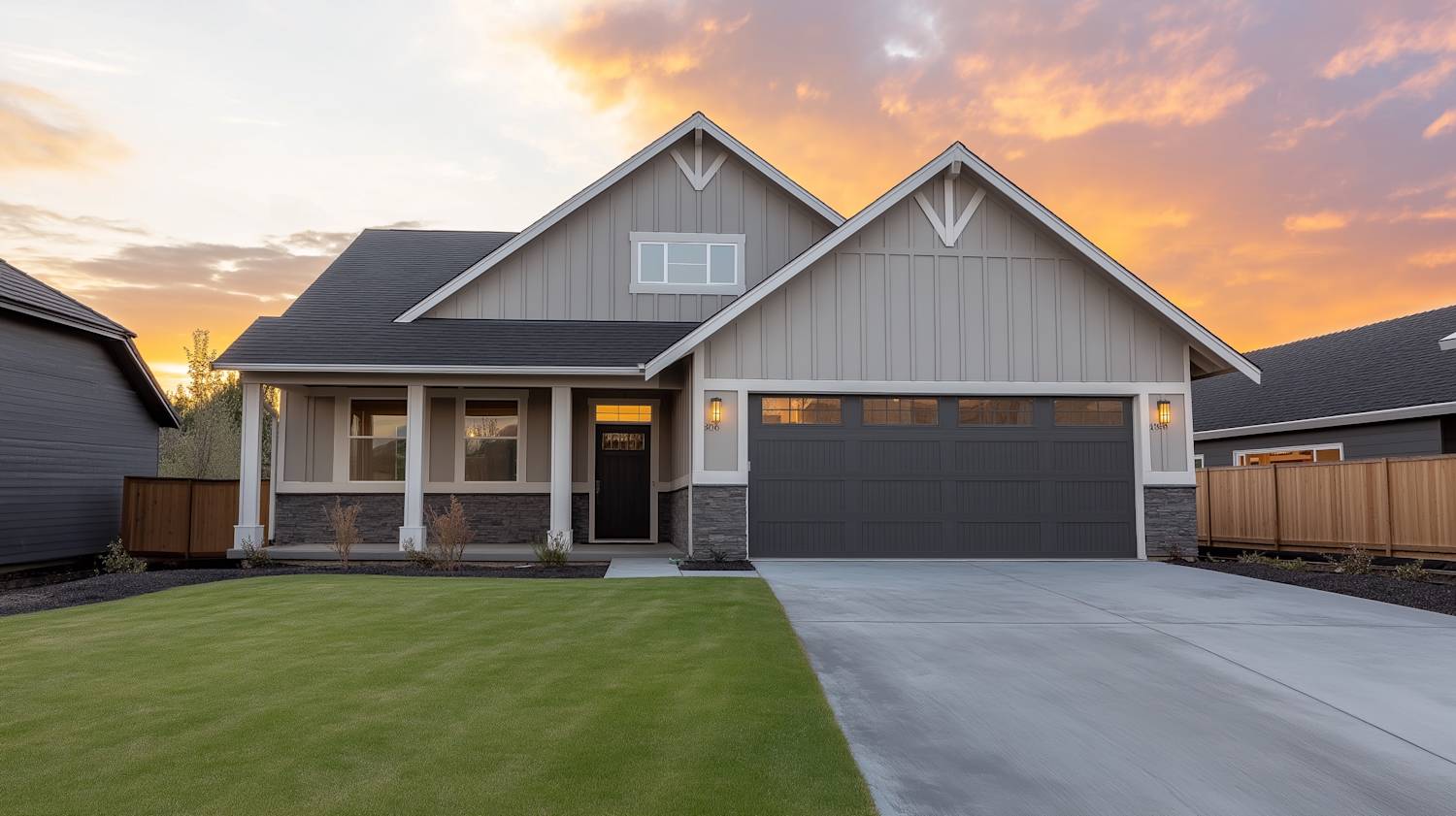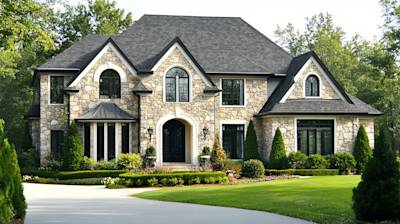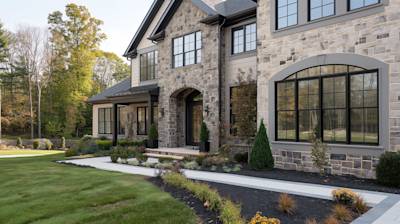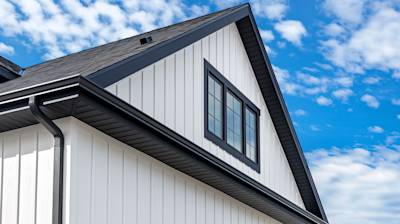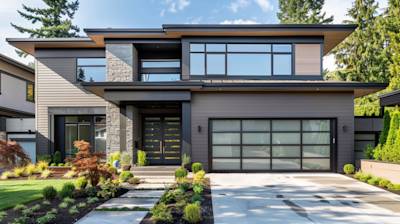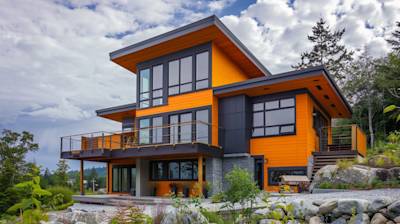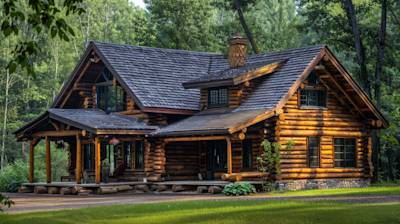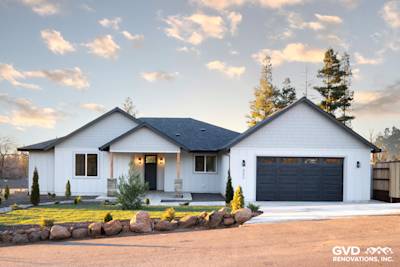When it comes to composing your residential or commercial structure's exterior, there are numerous aspects to consider. Among the most critical is your choice of siding. There are essentially two kinds of siding: vertical and horizontal. On first glance, the difference between vertical and horizontal siding might appear merely aesthetic, but dig deeper, and you'll uncover a world of advantages and details linked with each. This guide will delve deeper into "vertical vs horizontal siding," providing a comprehensive understanding of the topic.
What is Vertical Siding?

Vertical siding, as the name suggests, is a type of siding that runs up and down the sides of the building. Usually, it's adopted in a board-and-batten style, which consists of alternating wide boards and narrow battens. The battens are fixed on the seams to prevent water penetration. Dutch Lap, Tongue & Groove and Bead are other popular vertical siding styles. They are generally favored for their capacity to deliver a rustic and charming visual impact.
Understanding Horizontal Siding
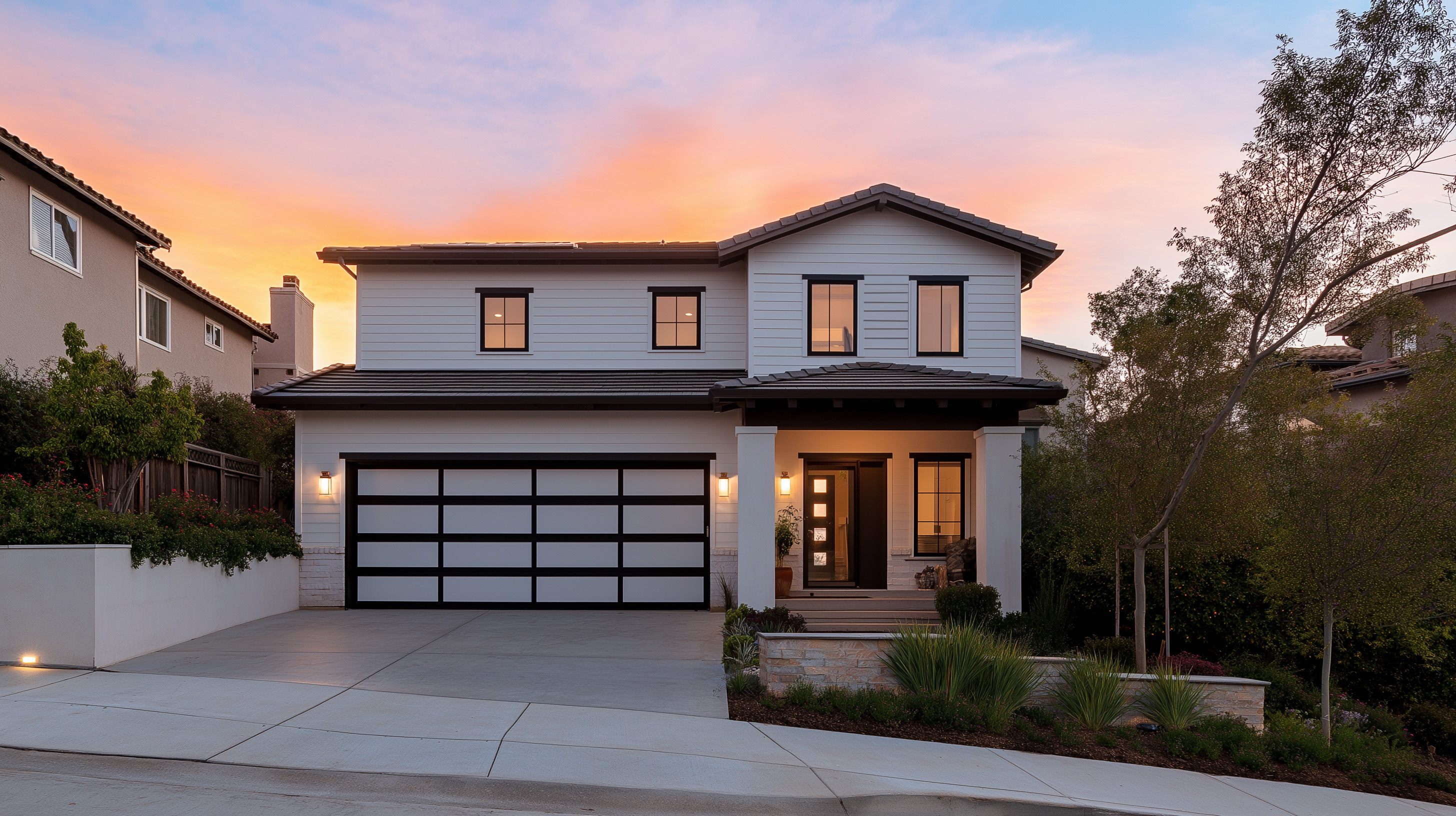
Horizontal siding is laid out from side to side, covering the length of your building. They offer variations such as clapboard, Dutch lap, and bevel styles. The most common type is lap siding, comprising of long boards overlapped for a tight seal. This traditional form of siding has remained a popular choice for homeowners due to its timeless appeal.
Vertical Siding Installation Process
Installing vertical siding involves an additional step, compared to its horizontal counterpart - the application of a furring strip which ensures a smooth, flat surface. Without this, there might be irregular bumps or dips across the siding surface. After the furring strip, vertical planks are installed followed by the battens to cover the seams.
Installing Horizontal Siding
Horizontal siding installation initiates at the bottom of a building and ascends towards the top. One has to be careful to overlap each board properly to avoid issues like water seepage. Though it's less demanding compared to vertical siding, a meticulous approach ensures a seamless look and robust protection.
Durability Comparison: Vertical Siding vs Horizontal Siding
Despite being subjected to similar natural elements, vertical and horizontal sidings respond differently. Vertical siding has the upper hand when it comes to longevity as it's less susceptible to water accumulation, reducing the risk of rot and decay. On the other hand, horizontal siding may require more frequent conditioning and maintenance due to its tendency to trap water and snow.
Aesthetics of Vertical and Horizontal Siding
It's fascinating how orientation can influence perception. Vertical siding adds a touch of novelty and can make structures appear taller. Architectural styles like Cape Cod, Cottage or Bungalow often use vertical siding, whereas horizontal siding is popular with Ranch, Colonial and Craftsman style homes. Despite the strong associations, either style can be deployed across different architectural blueprints for a refreshing spin.
Cost Implication - Vertical Siding or Horizontal Siding
Vertical siding installation usually costs more due to the additional step of adding a furring strip. However, the exact price difference varies significantly depending on the material, labor charges, and the siding style. It would be wise to consider the longevity and maintenance requirements as part of the total cost of ownership while making a siding decision.
When to Use Vertical or Horizontal Siding?
While both vertical and horizontal siding have their unique benefits, your choice will predominantly depend on your architectural style, budget, and personal preference. But, don't let clichés bind you. Exercise your creative liberty and combine vertical and horizontal siding for a dynamic exterior charm.
Whether it's a vertical siding for its distinctive appeal and durability or horizontal siding for its timeless elegance and cost-effectiveness – your choice of siding can provide your property a substantial durability boost, aesthetic uplift, and not to mention, a spike in the real estate value. After all, the perfect siding is not only intended to protect, but also to project your property's persona far and wide.
To conclude, understanding the difference between vertical vs horizontal siding is crucial when contemplating the right siding for your property. Now when you're familiarized with the information, making an informed decision should be a cinch.
Frequently Asked Questions about Vertical Vs Horizontal Siding
How About Horizontal Siding?
Horizontal siding, on the other hand, is literally the horizontal counterpart to vertical siding. This classic siding installation style has been widely used in residential construction. It often imparts a more traditional or rustic feel to a property. Notably, horizontal siding can help to give an illusion of a broader or wider space, making it frequently chosen for smaller homes.
Can Vertical and Horizontal Siding Be Combined?
Yes, absolutely. Many homeowners and architects combine vertical and horizontal siding to create a unique, eye-catching, and diversified look for the exterior of homes. The choice between vertical siding, horizontal siding, or a mixture of both really depends on what aesthetic or style you’re aiming for the building.
Does Vertical Siding Have Special Installation Requirements?
Unlike horizontal siding which can be directly nailed onto the studs of the house, vertical siding requires additional preparation before installation. For vertical siding, furring strips have to be installed vertically onto your house's sheathing to provide a nailing base. This is a crucial step to prevent the vertical siding from warping or collapsing over time.
Is There a Significant Price Difference Between Vertical and Horizontal Siding?
The cost between vertical and horizontal siding can vary based on the material you choose and the labor required for installation. Since vertical siding requires additional preparation, such as furring strips installation, it can be expensive over horizontal siding. Nevertheless, the price difference isn't often very substantial and should not be the only factor in your decision-making process.
What Materials are Usually Used in Vertical or Horizontal Siding?
Vertical and horizontal siding can both be made from a variety of materials. Some popular options include wood, vinyl, metal, and fiber cement. Each of these materials has its own benefits and drawbacks, with vary on cost, durability, care, and aesthetic appeal.
Which One Offers Better Water Resistance, Vertical or Horizontal Siding?
When it comes to water resistance, vertical siding has a slight edge over horizontal siding. It naturally allows water to flow down its surface more efficiently, reducing the risk of water seepage behind the siding. However, with proper installation and maintenance, horizontal siding can also provide excellent water resistance.
Can I Paint Both Vertical and Horizontal Siding?
Yes, you can paint both vertical and horizontal siding. The paintability of siding largely relies on the type of material used, rather than the orientation. For example, wood siding of both orientations can be painted easily. Vinyl siding, on the other hand, can be trickier to paint as standard paint doesn't adhere well to vinyl.
Pros and Cons of Vertical vs Horizontal Siding
Choosing between vertical and horizontal siding for your house is a significant decision. It affects not only the appearance but also the functionality and longevity of your home. Therefore, a detailed understanding of their pros and cons is necessary.
Horizontal Siding
Pros of Horizontal Siding
Attractive Traditional Appearance
- Horizontal siding is more traditional, creating a classic and timeless look.
Cost-Effective
- It's generally less expensive when compared to vertical siding which requires additional materials.
Ease of Installation
- Horizontal siding is easier and quicker to install due to its straightforward design.
Variety of Material Options
- It comes in a variety of materials, including wood, vinyl, and fiber cement.
Cons of Horizontal Siding
Water Damage
- Since water can collect and sit on the flat surfaces, horizontal siding is more likely to experience water damage.
Maintenance
- It requires frequent painting and sealing to prevent age-related wear and tear.
Damage Visibility
- Scratches and other damage are far more noticeable on horizontal siding.
Vertical Siding
Pros of Vertical Siding
Unique Aesthetics
- Vertical siding offers an unconventional, modern look that can make your home stand out.
Improved Rain Drainage
- The vertical design allows water to run off easier, reducing water damage.
Less Visible Damage
- Cracks and scratches are less noticeable on vertical siding due to the vertical lines.
Ideal For Tall Homes
- Vertical siding is a necessity on exceptionally tall homes, as it can help the structures withstand wind and other elements better.
Cons of Vertical Siding
Challenging Installation
- The installation of vertical siding can be more complex due to the need for furring strips to create an even surface.
High Maintenance
- It requires a seal on top, leading to higher maintenance needs.
Cost
- The additional materials and complicated installation process could increase costs.
Comparison Between Horizontal and Vertical Siding
As you decide whether horizontal or vertical siding is right for your home, remember to consider the specific needs of your situation.
Appearance
- If you prefer a traditional look, horizontal siding is your go-to option. However, if modern and unique aesthetics appeal to you, consider vertical siding.
Maintenance
- While both types need regular maintenance, vertical siding requires sealing at the top, possibly resulting in higher maintenance.
Installation
- Horizontal siding is easier and less time-consuming to install. In contrast, vertical siding demands furring strips for even installation, making the process more complex.
Cost
- Typically, vertical siding costs more due to complicated installation and additional materials.
In conclusion, the decision between vertical and horizontal siding should mainly be based on your personal design preference, your budget, and the amount of maintenance you're willing to do. By understanding the pros and cons of each, you can make an informed decision that suits your individual needs.
Summary
When it comes to "vertical vs horizontal siding", it's all about personal preference and specific needs. Vertical siding is often the go-to for commercial buildings due to its clean lines and professional appearance. It's also ideal for homes with high roof peaks, as it emphasizes the height and grandeur of the structure. On the flip side, horizontal siding is a classic choice for residential homes, complementing most architectural styles with its traditional look.
Everyone's idea of a perfect home includes considerations about aesthetics and practicality. This is where the debate of "vertical vs horizontal siding" comes to the forefront. If you live in an area prone to harsh weather conditions, the durability of vertical siding could be a match for you. It tends to be more resistant against rain damage and can stand the test of time. But if it's the appearance which comes first for you, horizontal siding with its seamless look might be your perfect fit.
Deciding on "vertical vs horizontal siding" doesn't have to be tricky. It's a good idea to keep in mind the maintenance needs as well. Vertical siding might require a bit more effort simply because it tends to accumulate dirt more readily. On the other hand, horizontal siding, while being lower maintenance, can be more prone to water damage over time. Either way, both options carry their own charm and utility, and the best choice simply depends on what suits your building, environment, and personal taste the most.
About GVD Renovations & Remodeling
GVD Renovations & Remodeling is your trusted local home renovation expert based in Roseville, CA. We specialize in high-quality, professional renovating services like kitchen and bathroom remodeling, siding installation, window replacement, and more. With a strong passion for craftsmanship and customer service, our team delivers unparalleled results that transform houses into dream homes. GVD Renovations & Remodeling is proud to serve the Roseville community and surrounding areas, helping homeowners to achieve the comfortable, modern, and beautiful living spaces they deserve. Come and experience the seamless, stress-free remodel process with us!
Tags: siding types, exterior design, home renovation,

